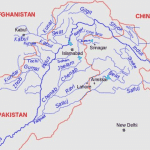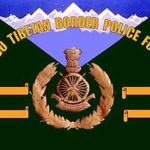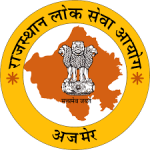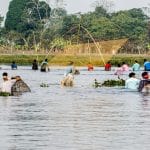Contents
TERMINOLOGY ( River System)
- River System– A river alongwith its tributaries.
- Drainage– the river system of an area
- Drainage Basin– the area drained by a single river system. It is also called a river basin or a catchment area.
- Water Divide– An upland, a mountain or any other elevated area separating two drainage basins.
- Perennial– rivers having water throughout the year
DRAINAGE PATTERN ( River System )
(a) (c)

(b) (d)
(a) Dendritic Drainage- The stream with its tributaries resemble the branches of a tree. It develops where the river channel follows the slope of the terrain.
(b) Rectangular Drainage- It develops on a strongly jointed rocky terrain.
(c) Trellis Drainage- A river joined by its tributaries at approximately right angles.
(d) Radial Drainage- It develops when streams flow in different directions from a central peak or dome like structure.
A combination of several patterns may be found in the same drainage basin.
INDIAN RIVERS– They are divided into two major groups
- Himalayan Rivers
- Most of the Himalayan rivers are perennial (receiving water from rain + melted snow)
- They have long courses from their source to the sea.
- They perform intensive erosional activity in their upper courses and carry huge loads of silt and sand.
- In the middle and the lower courses, these rivers form meanders, oxbow lakes and many other depositional features in their floodplains.
- They have well developed deltas.
- They are antecedent rivers where a part of a river slope and the surrounding area gets uplifted but the river continues to stick to its original slope. This is also referred to as Inconsequent drainage.
- They are flood-prone because of shifting of course.
- Waterfalls are present only in the youthful stage i.e. where they originate.
- Navigable ( Allahabad to Hugli ; Sadia to Dubri)
- They can be easily diverted for irrigation.
- Indus River System
- Ganga River System
- Brahmaputra River system
- They are mostly seasonal in nature as their flow is dependent on rainfall.
- They have shorter and shallower courses and do not have a broad catchment area.
- They are superimposed in nature.
- They are not flood-prone as they have hard plateau rocks below. Since it is difficult to erode hard rocks so they cannot shift their courses.
- Because of hard rocks, waterfalls can be present at any course of the river, even in the mature stage.
- These are not navigable.
- River basins are located on a higher plateau so it is not affordable to diver them for irrigation
- Most of the rivers of Peninsular India originate in the Western Ghats and flow towards the Bay of Bengal.
- However, some of them originate in the Central Highlands and flow towards the West.











